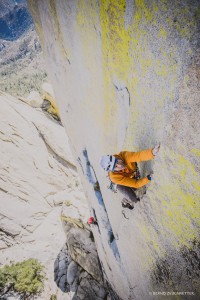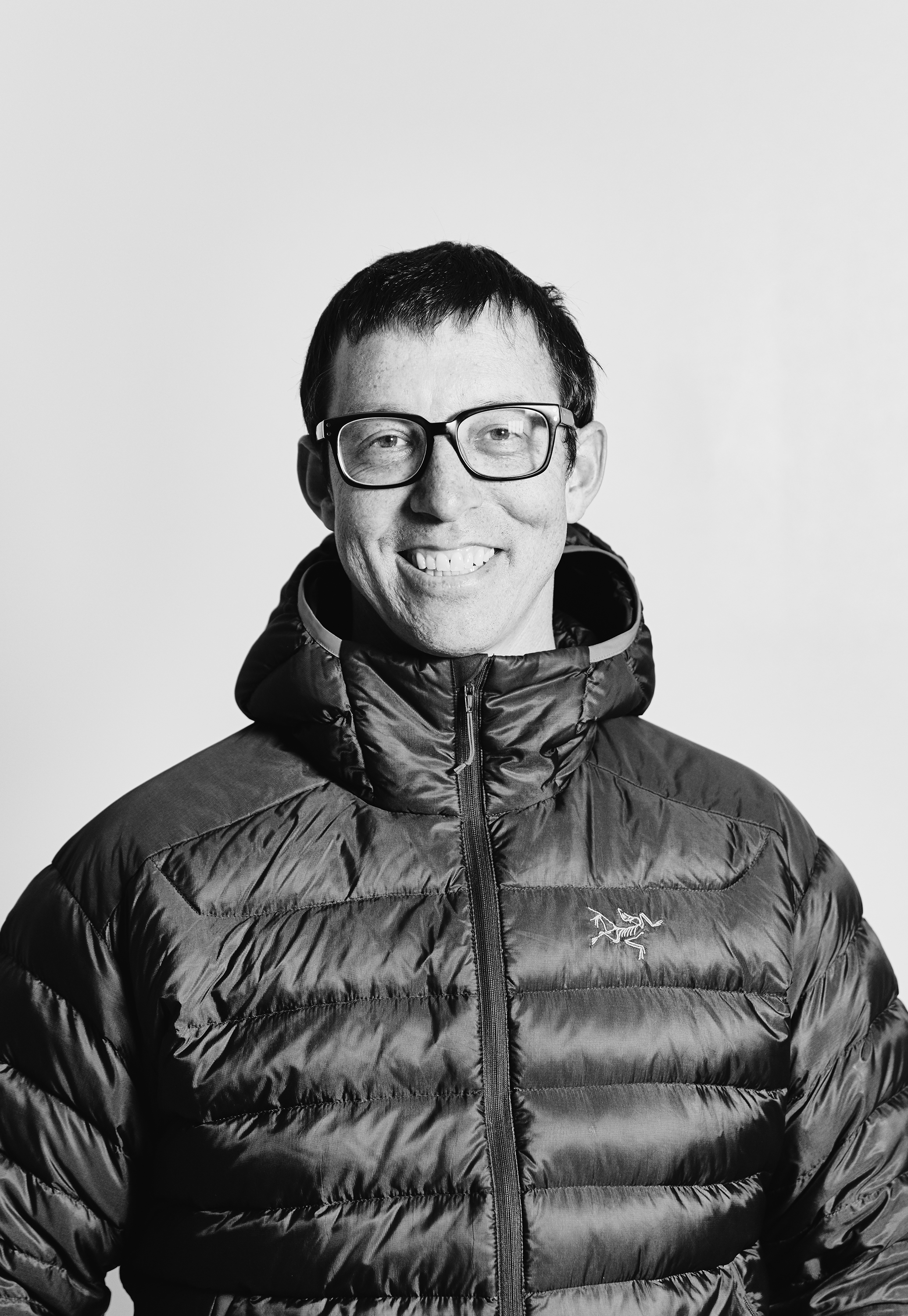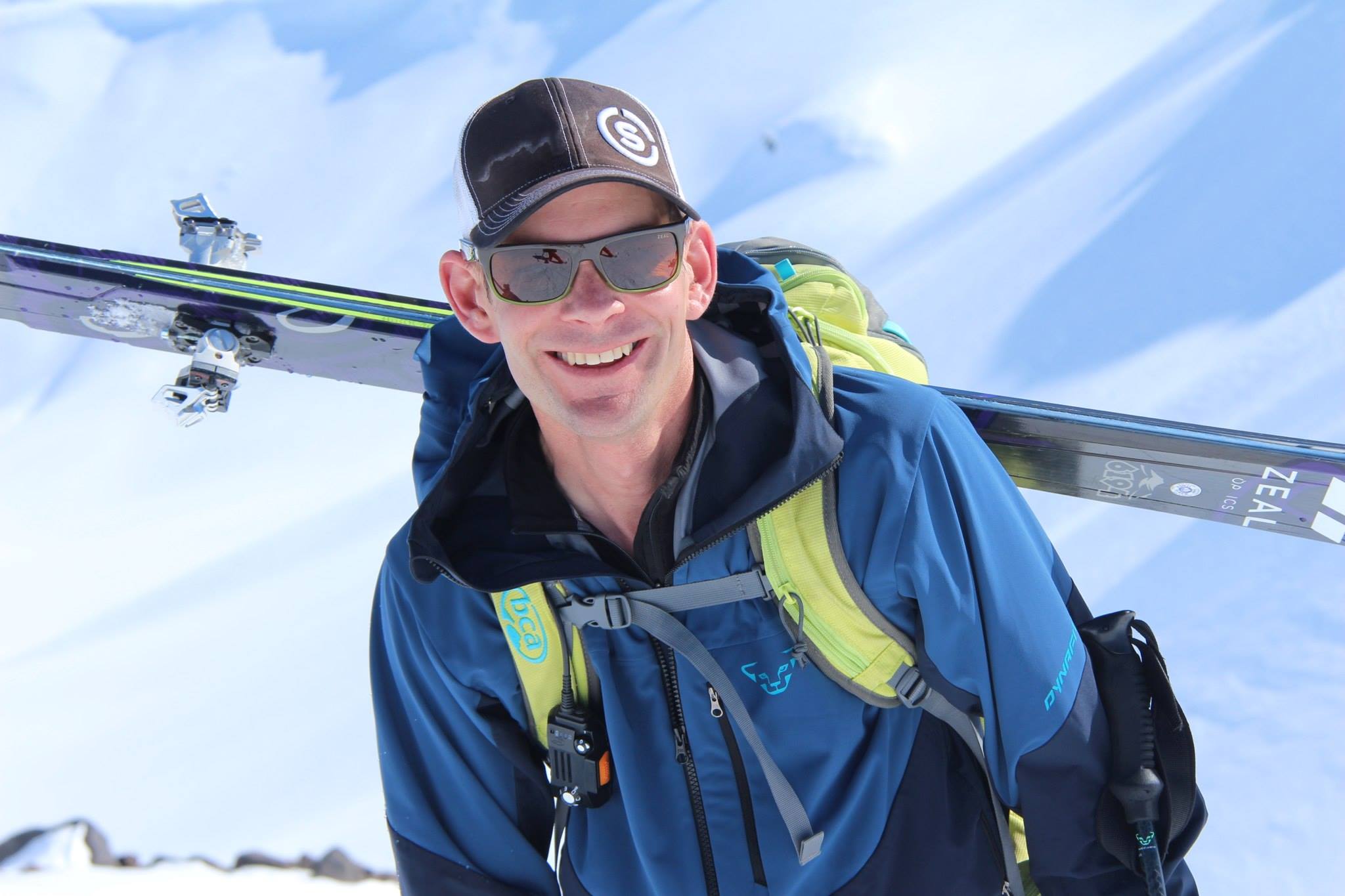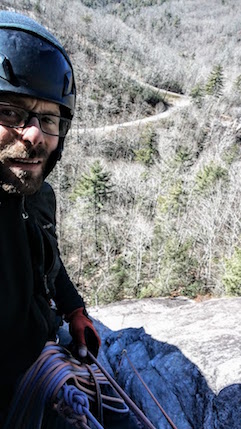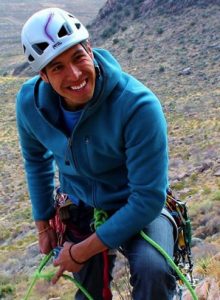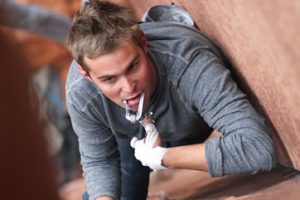AMGA Partner Athlete Profile: Peter Doucette with Outdoor Research
The AMGA is excited to announce a new blog series, to run for the rest of 2015, featuring Q & As with AMGA guides, instructors, and members who are integral members of our corporate sponsors’ athlete teams—men and women who are delivering both in the guiding world and as ambassadors for their brands and chosen outdoor sport(s). There is and always has been much overlap between mountain guides and top mountain athletes: guiding and teaching are a natural fit for those who excel in skiing, rock climbing, ice climbing, and mountaineering, as the activities pull from the same passion, wisdom, and skill set.
This week’s mini-profile is of AMGA/IFMGA Guide Peter Doucette, an athlete for Outdoor Research who lives in New Hampshire.

AMGA/IFMGA Guide and Outdoor Research athlete Peter Doucette on Repentance, Cathedral Ledge, N.H. Photo: Gabe Rogel
How did you get into the sport, and then guiding?
I grew up hiking and skiing, exploring the White Mountains of New Hampshire with my family from a very young age. For me, technical climbing began as a sophomore in high school, at the White Mountain School—perhaps the first secondary school to be AMGA accredited. I was fortunate to share a rope with great mentors in rock, ice, and alpine climbing in high school. The combination of an excellent training ground in my backyard and an enthusiastic community led to an ever-deepening fascination with all mountain environments.
My first trip out west, climbing in Colorado, British Columbia, and Wyoming, culminated with a one-day ascent of the Grand Teton. A year later, I turned 18 and participated in a NOLS Instructor course. I was fully enthralled by the opportunity to pursue outdoor education. Summer mountaineering work with NOLS got me invested in developing the broader skill sets required of outdoor professionals and allowed valuable time to grow with respect to leadership, communication, decision-making, and managing groups.
Summers in the west, working for NOLS, were complemented by work for Maine Bound while attending the University of Maine. I taught climbing in the fall, winter, and spring, alongside Jon Tierney, then a Rock and Alpine certified guide, AAIRE trainer, and wilderness medic. I committed nearly all free time to guiding and personal climbing. My first AMGA course was a RIC in New Hampshire, and I remember it as eye-opening and exciting. Early in my training, I wasn’t focused on certification; I simply wanted the information and to develop my fluency with movement and technical systems. The variety that guiding can provide has always appealed to me. To strive and manage the dynamics of conditions, partners, abilities, and weather through seasons and across terrain is endlessly engaging to me.
Why do you love guiding?
I enjoy sharing my passion for being in the mountains. There are many reasons I guide: to establish and maintain lasting relationships, to train and educate mountain professionals and recreational enthusiasts, and to share what others have shared with me. I believe we can all have better days in the mountains, make better decisions, move more efficiently, and achieve more interesting objectives if we engage the inherent challenges with good information. I practice mountain guiding to learn, maintain, and keep developing personally and professionally.
Why is standardized guide education important, especially now?
I would choose the word “valuable.” Guide education is extremely valuable for those who choose to pursue it. For me, it was integral in my personal and professional development because it made me work on my weaknesses and understand my strengths better. It helped me increase the rewards my clients experience while keeping associated risks in perspective. Early, training opened doors to work opportunities that continue to inspire me.
What is in your pack on a typical day of guiding?
As little as possible. The specific tools are always changing. The variety and lack of a “typical day” is something I appreciate about my career.
What has been your best day out guiding, and why?
Hard for me to choose a favorite really. Guiding a long-term guest on the rarely formed ice climb Omega on Cannon Cliff was a recent highlight. I love any day when conditions, objectives, personalities, and preparation align. In fact, even when they don’t align, but lead to good outcomes in unexpected ways, it’s excellent.
What has been your worst/funniest/most comedy-of-errors day out guiding, and why?
It was night, actually, and late in January a few winters back. The sky was clear and the temperature well below zero. I was training navy SEALs on a multipitch ice climb, and they were leading. We were all wearing night-vision goggles and laughing at the absurdity of trying to keep them fog free.
What is the one, most essential trick you’ve learned to make you a more efficient guide or climber?
Short answer: I like to have and utilize the right amount of rope for a particular objective.
More Complete Answer: I will say, I’m not a big fan of the term “trick” in the context of guiding. The capacity to maintain big-picture situational awareness while employing specific skills and/or tools toward desired outcomes is what it’s all about. And to be clear, I don’t think that’s a trick. Efficiencies in guiding are often found in execution. They may be achieved in part by thinking moves ahead, and thorough planning and training prior, and may be accentuated by experience. Still, for me, the most valuable efficiency is recognizing the less-scripted complexities of terrain, a guest, conditions, or perhaps weather, and meeting those in the moment, on the go, to follow through with an elegant solution.
What is the one item you can’t live without?
I really like the right footwear for the day
How do you let loose/relax when you’re not working?
I spend time with friends and family, cook and eat the best food I can lay my hands on, look over pictures from recent adventures, and plan my next adventure.

